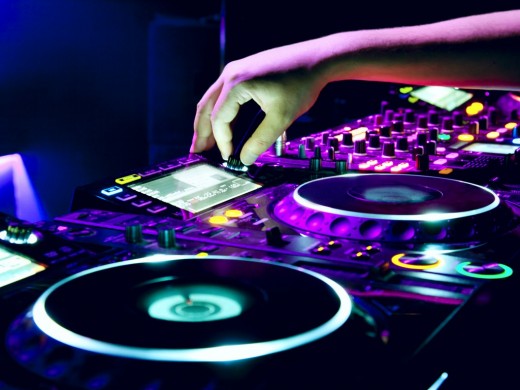How To DJ Mix - More Than Just Beat Matching
- Echo Effect - How To Use Echo Effects Live
Expert tips on how to use echo effects when sound engineering live. - DJ Clothes - What Do DJs Wear
Top style tips as well as practical advice on what to wear when DJing. What do DJs wear is an essential read!
How To Mix DJ Music
Professional DJs do it with ease and it is only when you try it yourself that you realise there is more to it than picking two of your favorite tracks and hoping for the best. Below is my guide to the main factors you should consider when mixing music as well as things that you can try to make your mixing more creative. There is allot of advice on beat matching. Honestly, my advice would be to just practice. Allot. Don't despair if you still haven't got it after three months, it takes time. Once you have it, keep practicing. It's a very difficult thing to get right and even more difficult to perfect. Get it perfect at home and getting in right in a real life club environment will come allot easier.

How To DJ Mix Songs
Point One - Tempo. It maybe obvious to allot of you, but mixing from one some to the next normally needs to be done within the same tempo. Keeping to the same tempo keeps the dance floor moving at the same rate it is familiar with. Watch a dance floor struggle when the DJ plays something allot faster or slower than the last track.
When organising your songs, you should have a good idea of the tempo of each track you have. If you mix from a laptop, then great, you probably already have a way of adding a tag to each track. If you have CDs or Vinyl, look at printing the rough tempo on the disk or sleeve. This way you can tell at a glance what song might fit tempo wise.
Key - A more advanced form of mixing involves mixing in key. For this you need to pick songs that are either in the same key or one tone apart. To find out the key for each song, you either need a musical ear, or you can employ the help of software. Mixed In Key is a great piece of software that is well worth a small investment. This piece of software also detects the BPM of a track so thats another job taken care of.
Vocals - The next tip comes with mixing vocal tracks. Stick to this one simple rule for a while and you will be fine: Don't crash vocals. That means, if there are vocals on one track, the next track that is being mixed in cannot have any vocals until the first track has been mixed out!
If you have two vocals running at the same time, it sounds awful. Occasionally you will find two tracks with vocals that work well because the vocals never clash, for example one has a line at the start of the bar, the other has a line at the end of the bar. If you are lucky enough to find something like this, then thats great!
Switching the bass! - You see those knobs called 'low' 'mid' 'high'? Take a minute to work out what they do. A great way to help your mix sound clearer is to never have the two 'low' knob (sometimes called bass knob) turned up at any one time. This way, the dance floor is only ever dancing to one bass line at a time. You can flick beween the different tracks as often as you want, just never have them playing at the same time.
Using Effects - Always use them sparingly, at least until you get absolutely amazing at the most important parts of mixing. Adding effects is an added bonus, and not something that is essential. Beat matching is so much more important that adding effects. Make sure you can beat match with your eyes closed before trying anything fancy!
How To DJ Mix - Droping In Time
If you are mixing dance music, you probably already know that the songs work in 8, 16 & 32 bar phrases. Meaning that quite often a breakdown will last 32 bars or the build up will last 16 bars. Its really important to workout exactly how many bars it takes for something to happen on each of your tracks. A simple one to get started on is to work out how many bars it takes before a bass line comes in on a track. Then work out when the bass line stops on another. Try to mix so that the bass line on one starts when the other finishes and see what happens! Try this trick with other places in the tracks. Why not try to get the two tracks dropping at the same?! Heavy!
Ok, thats enough to be getting on with! Good luck!
Volume and gain control. If you are lucky enough to have a mixer that has lots of meters on it (the green, yellow and red lights that tell you how loud your are) then you should always keep an eye on them. I won't get too boring here, just don't go in the red. Stay in the green and maybe yellow and stay there. When recording a mix or playing live, pick a volume (using the lights on the meter to workout how loud you are) and stick to it. If you go any louder or quieter, people will notice (especially on a recording).
Volume as an impact tool - Ever notice how it's always great when the DJ turns the music up but that great feeling disappears after a while even if the volume stays up? This is because volume is an impact tool. A really under used piece of advice is to turn the volume up really quickly but just a little bit at a key point in the sone (the drop perhaps), and then slowly turn down over the course of the next 30 seconds. This way, you get to use the volume impact over and over again!



